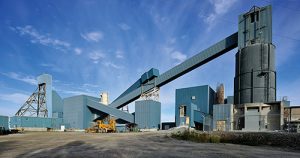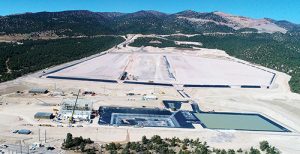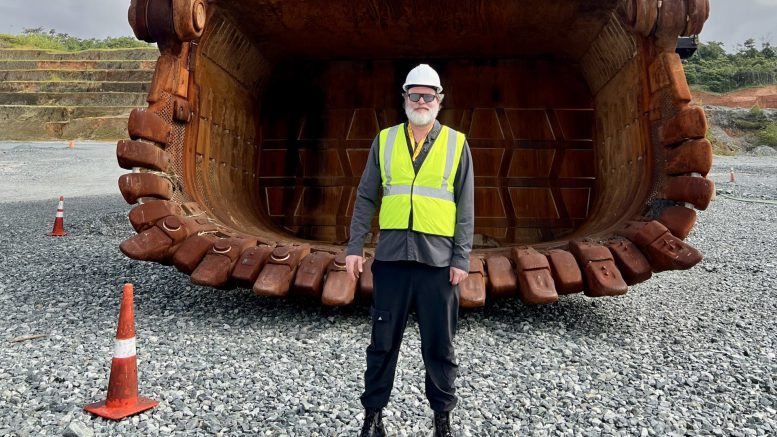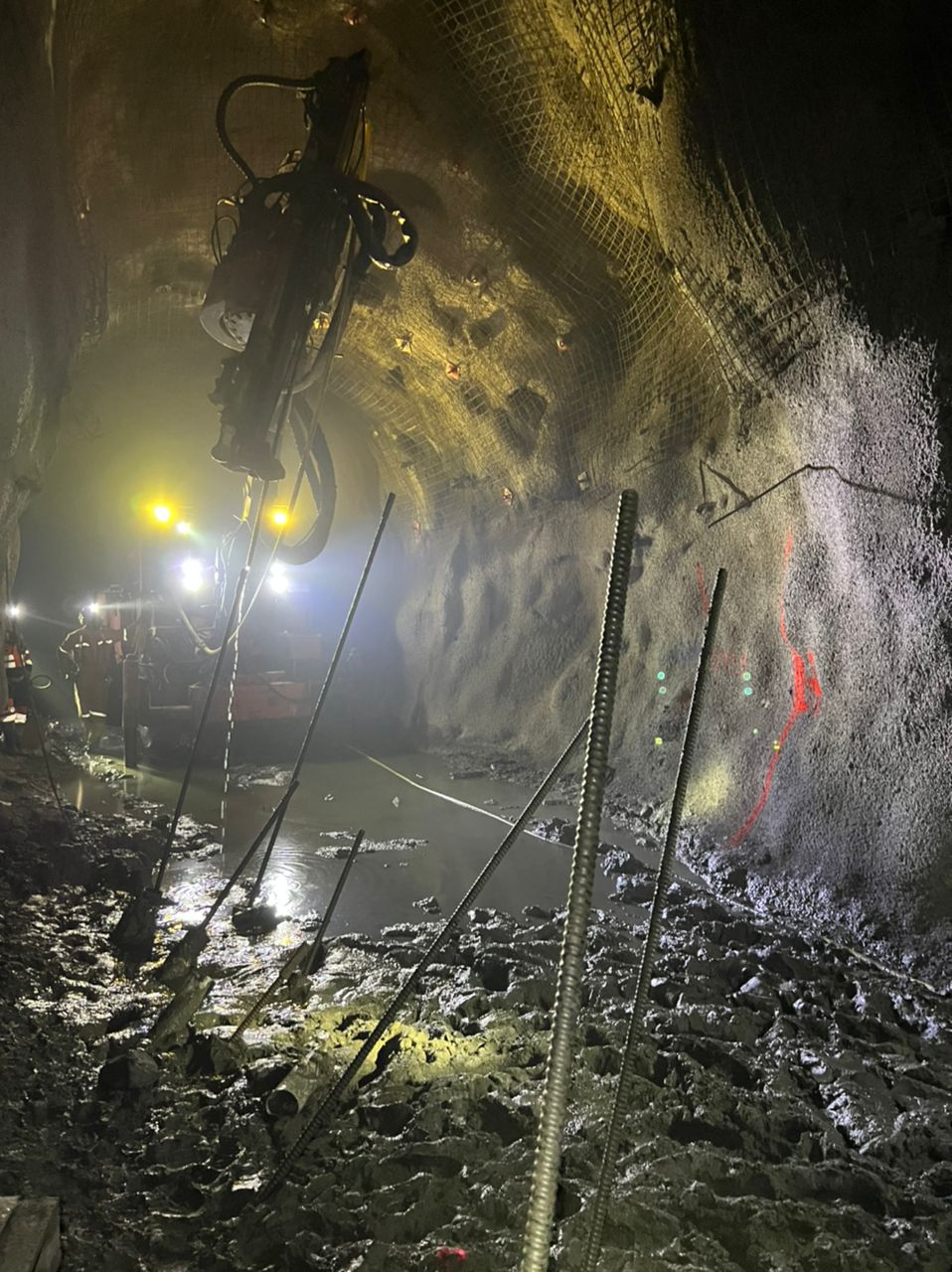Mining in the age of USMCA

McEwen’s Black Fox gold mill in Northern Ontario. CREDIT: MCEWEN MINING
With all the talk this past year about U.S. tariffs on Canadian steel and aluminum, have we been ignoring the larger impact of trade on Canadian mining generally? Well, consider the numbers, says Brendon Marshall, vice-president, economic and northern affairs at the Mining Association of Canada (MAC). “In 2017, there was more than $99 billion in export value for Canadian mineral and mineral products or approximately one-fifth of Canada’s overall export value.”
Roughly half of the $99 billion dollars in export value in mineral and mineral products enters the U.S. every year, Marshall added. That obvious reliance of the U.S. manufacturing sector on these products adds up “to a good economic partnership and economic rationale to have greater and freer movement of materials across our shared border.”
A delicate balance
And there in a nutshell lies the problem. Mining distinguishes itself from other industries in its higher risk profiles, capital intensity with long lead times and long waits for return on investment, all of this occasionally hampered by geography and foreign government policy, for example in the U.S. under president Trump.
“I do think what America is doing to streamline their regulations in order to speed up permitting and attract capital investment is definitely going to have an adverse impact on mineral investment in Canada,” says Rob McEwen, chairman and as the company’s largest shareholder, “chief owner” of McEwen Mining. Where Canada’s regulations and permitting processes are “slow and ponderous and full of ambiguity, the U.S. is trying to get rid of that as quickly as possible,” he says.
“So then it becomes a question of balancing: do I want to put my money in Nevada or put it in British Columbia?” says McEwen, whose company has projects in Canada, the U.S., Mexico and Argentina. “I think we are at a competitive disadvantage.”
Unlike Canadian manufacturers operating in other countries, miners can’t move their foreign-based plant operations back home or to another jurisdiction. It’s that exposure that has Marshall lamenting the disappearance from NAFTA of the Investor-State Dispute Settlement mechanism (ISDS) which enabled a mining company to seek remuneration for financial losses associated with U.S. mistreatment.
“And then the government of the day would make a determination that they wanted to advance the case,” Marshall says. While provisions still exist in the new trade deal to impose equivalent tariffs between both countries, they no longer provide a way for mining companies to obtain remuneration from the U.S. government.
McEwen’s view: “I don’t think a tariff being placed should entitle a company to seek compensation from any party other than maybe seeking recourse from the government that’s putting on the tariff.” Certainly the Canadian government shouldn’t be stepping in with compensation, as it did with its promise of $2-billion in assistance to this country’s steel and aluminum industries, he says.
Moreover, seeking compensation from the U.S., given its giant economy and purchase of Canadian products and goods and services, would only hurt miners on this side of the border, McEwen adds. “We don’t have a lot of defences there.”
For its part, MAC has been a big supporter of free trade, notably those deals between Canada and Europe and with South Korea. What does McEwen make of the new trade deal involving Canada, the U.S. and Mexico? Not much. Ottawa has a more important task, he says. “It should be making Canada an attractive place to make an investment and get a return early, not late and uncertain,” he says.
Nor, he added, are people talking about lifting trade barriers where it might really count, i.e. between provinces in greater mobility of labour and goods and services. “Our government’s looking outside when it should be looking inside.”
Consider as well how much of that “outside” is represented by the U.S. appetite for Canadian gold. At just over $4 billion, Canadian gold exports to the U.S. were less than a quarter of the total export value worldwide last year. By far our largest market for gold was Europe, which imported more than $12.5 billion of the stuff from Canada.

Gold Bar sIte overview October 2018. CREDIT: MCEWEN MINING.
McEwen invests for the future
Regardless of what happens with U.S. trade, McEwen Mining is getting ready for the next commodities cycle.
McEwen, a tireless booster of gold, says the sector is starting to turn up. “We’ve already entered the bull market for commodities,” he says, although “interest rates will probably go up, too.”
He adds: “But there’ll be a growing appetite for minerals and gold and other commodities. Like the lumber and agricultural industries, the mining industry is cyclical; it has these peak cycles and we happen to be at the beginning of a new one.”
In a single sentence, McEwen sums up what his shareholders should be happiest about: “We have production growth and we’re spending quite a bit on exploration, and to me exploration is the R&D of the mining industry.”
He adds: “Right now, we’re investing heavily so we’re not generating anything really in terms of earnings. But we’re positioning ourselves for this gold market that’s coming.”
A case in point: the company’s new Gold Bar open-pit mine in Nevada. The $81-million mine will be its largest gold producer when it begins production in early 2019, with production forecast at 55,000 oz. in its first year of operation, 74,000 oz. in its second and 68,000 oz. in its third. McEwen spent $5.2 million on exploration at Gold Bar this year. The company has also budgeted $19 million for exploration at its Black Fox complex in Timmins, Ont.
In the meantime, attributable production at the company’s 49%- owned San José mine in Argentina for the first three quarters of 2018 totalled 34,730 oz. gold and 2.2 million oz. silver and El Gallo in Mexico exceeded McEwen’s full year guidance of 32,000 goldequivalent ounces. A preliminary economic study released in May for a proposed redevelopment plan to extend El Gallo’s mine life, called Fenix, envisions an average annual production rate of 47,000 oz. gold equivalent and a 12-year mine life. Using existing infrastructure would keep initial capital cost low at $41 million for Phase 1 and $30 million for Phase 2.
Investing the old fashioned way
As a strong advocate of gold, McEwen is nearly as big a naysayer for one way many have chosen to invest in gold: streams. Investors love exchanging upfront capital in exchange for a percentage of the metals extracted for a much lower price and then selling those metals at current market value. McEwen believes miners give away a large part of their profit margins as a result, and do so because they’re run by “very lazy” management.
“They say, ‘Well, we gotta build a mine and this is the only source of financing.’ Maybe they should have exercised some discipline and said, ‘Look, we’re not going to accept these terms because we’re not going to give away our shareholders’ future.’”
Instead, some investors “take the money right off the top,” to avoid conflicts with communities and Indigenous Peoples or dealing with changing government policy and permitting. Like day- to-day operational issues, all that is left to the mining company. “And there are some risks that a mine might shut down because they sold too big a stream and they don’t make any money,” McEwen says.
Measuring risk
McEwen reserves some of his displeasure for the broadsheet media preoccupied with “cryptos or cannabis and who think gold is not an asset worth looking at.” Can you blame them? Not entirely, McEwen acknowledged. Many investors “got burned” after a bullish gold market from 2005 to 2011 “and the bottom fell out like a trapdoor.”
This, one of the longest and deepest bear markets of the eight that have occurred in the last 77 years, may yet hold the key to the future, McEwen says. Today, the downside risk is relatively low because the bear market is finally at an end. Over that same period, four of the six preceding bull markets, he says, produced gains of greater than 600%.
“So maybe it’s worth a moment of your time to look at gold stocks that appear to have low downside risk and attractive upside risk.”





Comments